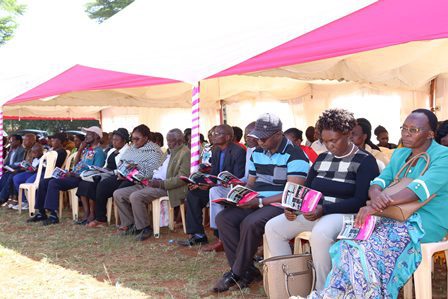The year 2023 could turn out to be a watershed year for Kenya’s rapidly growing Co-operatives sector. With the setting up of a fully-fledged Ministry of Cooperatives, Micro, Small and Medium Enterprises (MSMEs) Development when President William Ruto formed his first Cabinet after the August 2022 polls, the co-operatives sector now has an enormous opportunity to regain its lost clout and financial might.
The return of this new ministry, which had been reduced to a mere state department by the previous regime, could be a big chance for the vast co-operatives sector to improve its fortunes which have been dwindling for years.
The Kenya Kwanza Government has already indicated that it will disburse the recently launched Hustler Fund through Savings and Credit Co-operative Societies (SACCOs), among other channels, to those individuals operating at the lowest levels of the income pyramid.
The Government has also indicated its interest in implementing the new National Co-operative Policy, bringing in new regulations that reflect the latest developments in the sector and aligning it to the 2010 constitution, which has slotted growth of the co-operatives sector as a function of the devolution or County Governments.
This separation from functions means that the national Government will only deal with co-operative societies at the policy level and regulation, leaving growth and development of the sector to country governments.
In 2023, the growth of the co-operative sector will be critical as the Government plans to credit and business loans to low-income earners in every village under the Hustler fund program.
At a time when the industry now has a fully-run Ministry, all eyes will be on how the Kenya Kwanza administration speeds up the implementation of pending plans in the industry, such as setting up an inter-Sacco lending facility, review of Cap 490 of the Cooperatives Act, increasing the financial muscle and roles of the Sacco Societies Regulatory Authority (SASRA) now that it is also supervising non-withdrawable deposit-taking SACCOs which have deposits of more than Ksh 100 Million.
While Kenya’s bubbling co-operatives sector has had fewer cases of institutions collapsing with funds belonging to members like the yesteryears, recent financial turmoil involving Metropolitan and Moi University Saccos points to the need for the Government to set up the long-awaited Deposit Guarantee Fund for the sub-sector. This move will definitely restore the shaky confidence that the public has in the movement, which has yet to fully recover from the past legacy of corruption, theft of funds belonging to members and gross mismanagement by incompetent officials.
With stiff competition from commercial banks and other financial players making it difficult for smaller co-operative societies to survive, 2023 presents the right opportunity for the Ministry of Cooperatives to step in and offer an inter-lending facility for Saccos to regain lost market share. This Sacco inter-lending facility project has already been delayed by more than three years.
Many cash-strapped societies have been unable to raise funds through expensive borrowing from banks, and there has yet to be any clarity on the launch of this facility. This has resulted in market share gains for banks- the closest competitors to Saccos, who are better capitalized and more liquid.
Expectations are high that once this inter-Sacco lending facility is linked to the National Payments and Clearing system, Saccos will become more liquid and provide members with better financial products and credit facilities.
In 2023, the Sacco industry will be keen watching on developments from SASRA and its multi-agency team made up of the Central Bank of Kenya (CBK) and the Kenya Law Reform Commission (KLRC) as it seeks to set up the required legal framework through which Saccos can lend and borrow money from each other.
Under this financial window, Saccos will be able to lend and borrow directly from each other to offset their financial positions, allowing them to manage cash constraints. More than 50 Saccos have already shown interest in the initiative and are working with SASRA.
Many industry experts expect all these developments, along with more Government support, will enable the co-operatives sector to return to the road to recovery in 2023 and emerge as a formidable player in the financial sector space that can tread the rough tide ahead.
As the Cabinet Secretary for Cooperatives Simon Chelugui settles down in 2023, his in-tray will be complete as attempts to deal with such matters as stiff competition faced by Saccos from other players in the financial sector, limited adoption of technology by the co-operatives sector where many players still have limited financial resources, have low co-operative education among members, experience poor member retention, and lack aggression in Kenya’s increasingly competitive financial market.
A few troubled societies indicate the need for solid governance structures, which exist but require tightening. Regulators should not be underfunded and toothless. There should be adequate funding to allow sub-sector regulators to have early warning systems in place to detect smoke in financially troubled societies before they drift into the financial doldrums.
While co-operatives are viable financial vehicles, they are yet to become attractive to the youth, their ranks dominated by ageing members, who are not techno-savvy and mostly not as well educated. 2023 presents an opportunity for change.





